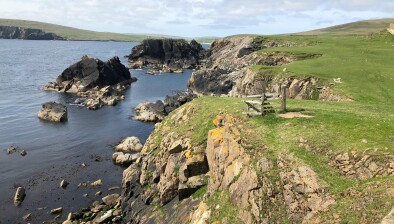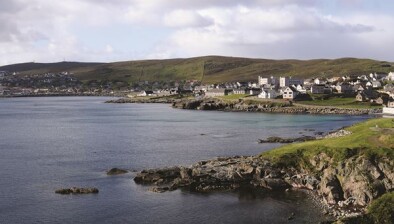Pre-seismic report for proposed fixed links to Yell and Unst

The Unst and Yell Tunnel Action Groups have today published the pre-seismic report for proposed fixed links to Yell and Unst.
The report follows on from site visits in Shetland during June this year, reviews earlier investigations into the feasibility of subsea rock tunnels across Bluemull Sound and Yell Sound, and sets out the groundwork for the crucial next step - seismic surveys.
The pre-seismic work was carried out by Norconsult, the international engineering consultancy responsible for the design of all subsea tunnels in the Faroe Islands, as well as many in Norway.
The report reviews previous geological studies, carried out between 2000 and 2002, which included seabed surveys and geological mapping. These earlier studies identified potential challenges, including sediment layers, rock quality variations, and fault lines.
Based on updated international best practice and site visits, Norconsult has now produced new indicative alignments with a gentler slope of five per cent (compared to eight per cent in older studies). This change lengthens the tunnels but makes them more suitable for modern design standards and future transport use.
The report highlights that:
- Bluemull Sound has complex geology, with ridges and troughs in the bedrock and variable sediment depths. Adjustments to alignments may be needed to find the best rock mass quality.
- Yell Sound shows deeper rock structures and significant fault zones. The most promising alignment is likely under Bigga Island, though this will need confirmation through further studies.
- On land, refraction surveys are recommended to assess soil thickness and rock mass quality, particularly in tunnel portal areas. Initial surveys on land and sea will inform potential tunnel alignments and entry points. Ground Penetrating Radar (GPR) can identify soil cover but not rock mass quality.
- Existing shallow seismic data is good, but new surveys are required to update and extend the dataset, particularly in Bluemull Sound.
- More detailed mapping — including bathymetric surveys, shoreline geological mapping, and eventually core drilling — will be essential to refine possible routes.
The alignments for possible tunnels are preliminary lines only, produced for technical assessment purposes. The next stage, a full seismic study, will provide the detailed geological data required to identify which alignments are feasible and to refine potential routes.
Joint chair of the Unst Tunnel Action Group, Alec Priest, said: “We are delighted to have completed this important step in the process. It shows how the money raised by our communities is being used, and gives everyone the chance to see how the project is progressing.
“Seismic surveys are the next crucial stage. They will give us the detailed data on the seabed and rock structures that we need before any firm decisions can be made about alignments and help refine costings for potential fixed links.
“Thanks to the amazing response so far, the majority of funds are already in place for consent support work and the seismic surveys. Just a small funding gap remains, which we hope to fill through continued community effort, local business support, and upcoming events.”
You can support the ‘Time to Tunnel’ campaign at shetlandtunnels.co.uk and can contribute to the sub-sea tunnel projects fundraiser here. Any businesses interested in supporting the project are invited to contact the Tunnel Action Groups direct via the ‘contact us’ page on the website. Further details of an online auction and other fundraising events will be announced soon.














